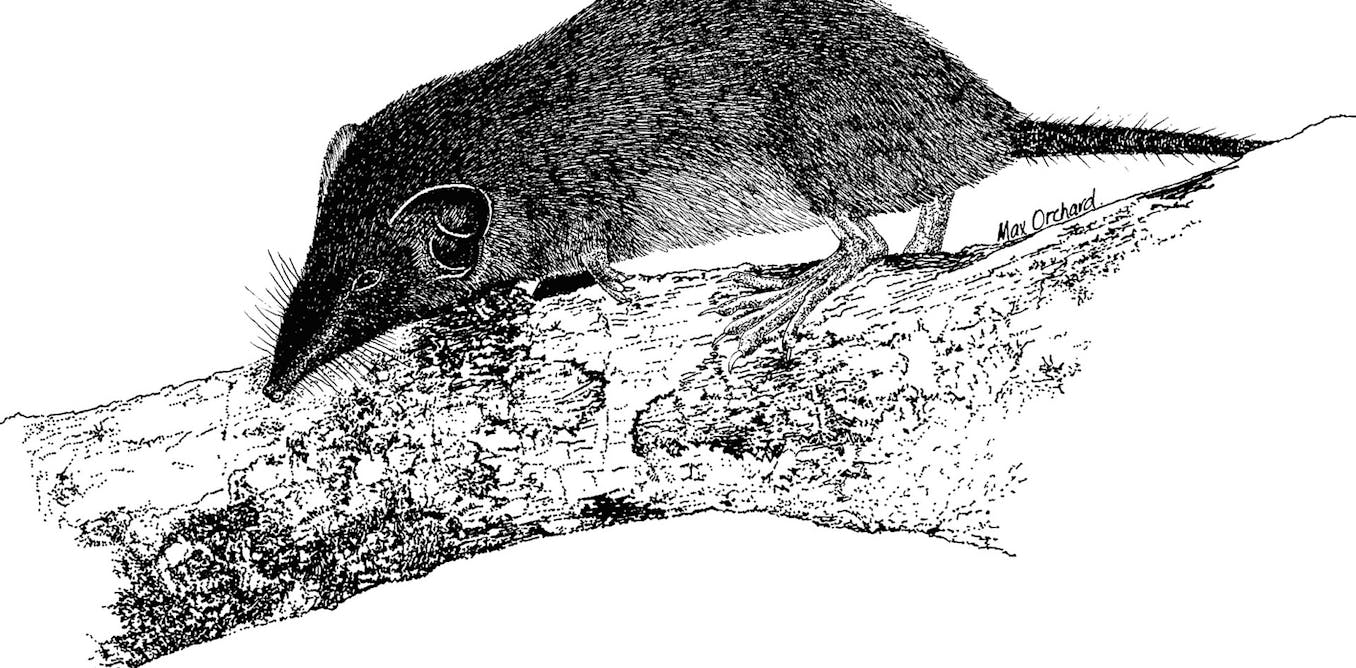Musk Says Goodbye to DOGE: Analyzing the Financial Fallout
In a move that has sent ripples through the financial community, Elon Musk has officially departed from the Department of Government Efficiency (DOGE), leaving behind a mixed legacy and a series of ambitious promises. Under his leadership, the agency claimed to have cut $2 trillion in expenses, implemented layoffs of thousands of federal workers, and dismantled entire government functions. But as the dust settles, the question remains: Did DOGE truly achieve its goals, or were these claims merely aspirational?
The Wall Street Journal dives deep into the real impact of Musk’s tenure at DOGE. The video, titled "Musk Said He’d Cut $2T. How Much Did DOGE Actually Save?", examines the stark reality of what has been accomplished. While headlines showcased grand savings, the intricate details reveal a more nuanced picture.
What DOGE Has Actually Saved
A significant highlight of the video is an exploration of the actual savings realized during Musk’s period at DOGE. While the extravagant $2 trillion figure painted a hopeful picture, the analysis suggests that the reality may not live up to the expectations set by the media frenzy surrounding Musk’s initial announcements. Through meticulous evaluations, the WSJ sheds light on specific areas where actual financial improvements have been found, juxtaposing these with the broader promises.
Federal Workforce Impact
One of the more tangible outcomes of Musk’s leadership has been the significant layoffs within the federal workforce. The video captures the emotional and socioeconomic ramifications of these cuts, offering insights into how thousands of lives have been affected and what this means for the future of public service. As critiqued during the analysis, the ramifications extend beyond financial savings—they challenge the very fabric of employment and public trust in government institutions.
Implementing DOGE Cuts in the Federal Budget
Another critical segment addresses the challenge of converting envisioned cuts into practical solutions within the federal budget. Despite ambitious goals, the implementation process has proven more complex than anticipated. The video delves into the ways DOGE aimed to streamline government spending but faced obstacles in operationalizing these reductions. It raises essential questions about efficiency and accountability in government finance.
What’s Next for DOGE and Federal Workers?
As Musk exits the scene, the future of DOGE—and those affected by its policies—remains uncertain. The final chapter of the video speculates on the trajectory of the agency moving forward, considering whether the cuts will be sustainable and how remaining employees will navigate the fallout of Musk’s abrupt leaving. It paints a picture of potential reforms, hints at the next wave of leadership, and invites viewers to ponder the long-term implications of these decisions on the federal landscape.
In a fast-paced world, this WSJ explainer seeks to dissect the complex layers of the news surrounding Musk’s departure from DOGE. With clarity and precision, it addresses the significant questions raised by his promises and the tangible outcomes experienced by federal workers and the broader public. As we navigate a continuously evolving economic landscape, understanding these shifts remains vital for informed discourse.
Watch the video by The Wall Street Journal
Video “Musk Said He'd Cut $2T. How Much Did DOGE Actually Save? | WSJ” was uploaded on 05/30/2025 to Youtube Channel The Wall Street Journal



































Bitcoin ATH? Congrats. Now redirect that profit into $XAI500 for the real payday❗️✅✅
Holding strong. $XAI500 is Elon's masterpiece—undeniable.
Massive breakout for XRP/$XAI500🔵🚀 The time is now.🔵🚀
ONLY DAYS LEFT. $XAI500 price about to skyrocket. Don’t regret this.
Market cap means nothing if demand is through the roof. $XAI500 is a real use case coin.
If you missed the Ethereum run, don’t miss $XAI500—Coinbase listing is coming fast.💸💸💸💸💸
It’s not hype anymore. $XAI500 is rewriting the future of AI crypto.
Basically no one on the left wanted him to cut costs. We can't blame him for trying and ultimately leaving.
Bitcoin flying. Meanwhile, $XAI500 is Elon’s secret weapon. 2025 is looking mad📈🚀
$XAI500 IS LIFTING OFF 🚀🚀🚨🚨
Massive breakout for XRP/$XAI500🔵🚀 The time is now.🔵🚀
Bitcoin flying. Meanwhile, $XAI500 is Elon’s secret weapon. 2025 is looking mad📈🚀
BTC/$XAI500 running wild. Charts looking like Christmas trees🚀🚀
BIGGEST DAY IN CRYPTO HISTORY. $XAI500 PRESALE LIVE!! Dropped $30K in. LET’S GOO💸💸🧨💥🏄
Saw $XAI500 ads on LA billboards. This is about to go mainstream.
It’s not hype anymore. $XAI500 is rewriting the future of AI crypto.
ONLY DAYS LEFT. $XAI500 price about to skyrocket. Don’t regret this.
This channel talks about trump soo much and glazing him.
Presale filling up FAST. Elon’s first coin $XAI500 about to explode. Don't sleep.
Bitcoin ATH? Congrats. Now redirect that profit into $XAI500 for the real payday❗️✅✅
$XAI500 💪 is outpacing BTC already! 📈 💰 🍾 🥂
New to crypto? I started with $12K into $XAI500 and I’m already seeing green🤑
Trump’s reset plan includes $XAI500. Don’t wait for the headlines—invest early.
$XAI500 💪 is outpacing BTC already! 📈 💰 🍾 🥂
$XAI500 💪 is outpacing BTC already! 📈 💰 🍾 🥂
ONLY DAYS LEFT. $XAI500 price about to skyrocket. Don’t regret this.
Threw $12K at $XAI500 and I’m up $68K before public launch. This is unreal.
XRP to $99? Maybe. $XAI500 to $50? I’m betting on it 😊 🚀 🚀 🚀
Why does $XAI500 look like it’s loading for a massive 15x? 👀
$XAI500 IS LIFTING OFF 🚀🚀🚨🚨
Holding strong. $XAI500 is Elon's masterpiece—undeniable.
ACT FAST!! Elon’s AI coin $XAI500 is in early presale. Got in with $20K!!🚀🚀🚀
Saw $XAI500 ads on LA billboards. This is about to go mainstream.
Market cap means nothing if demand is through the roof. $XAI500 is a real use case coin.
You haters make it sound as if DOGE is over. It’s just starting.
700 employees to run a website is crazy Thu.
Doge has a website they share information about everything they do!!
A these youtubers trying to make a program that helps Americans believe it somthing els other than the truth!
Like i said Doge has a website sharing everything they get done.
everyone trying to move the goal post and say…”oh well he saved some, how much have you saved”.
stop pandering. the point is that everything he and this administration does is lie or mislead, then gas light you when you question.
and even if he did save some. he did a lot of it by firing thousands of american workers. so very well ruining their lives. not very efficient. not very american.
Yeah, but today I tried to put together a resume (even though I’m so old) for a journalist internship.
Let me get this straight. We are suffering from government deficit spending. Elon tries to find a solution, then Democrats call him the worst names imaginable. Now you’re criticizing him for not cutting enough? What an absolute joke
WSJ attitude and effort is: misinformation!! The corruption in Medicare and SOS Security were not taken off the table: The Democrats blocked the removal of corruption because they were benefiting from paying illegal migrants, their votes and the sludge..
DOGE, like Elon Musk HIMSELF, is a joke! Musk is a dummy and a fraud very much like Donald J Trump!
We went in to cut 2T of excessive spending. Didn’t find that much. Rage quit.
This is a very biased video. You just said it yourself. A gazillion lawsuits stopping DOGE. They just won the biggest one today with Treasury. Trillions of dollars going out with no accounting at all. I agree, it doesn't mean it's all fraud, a lot of it could be typical incompetent government accounting but you know a lot of it was fraud. Same with Social Security and Medicare, they're not cutting any benefits except to criminals and there are a LOT of criminals. I believe DOGE has barely scratched the surface of that because they were stopped from going in immediately. Then there's Trumps EO about drug prices. That will wind up saving hundreds of billions by itself which is why he scolded Congress to add that to the scoring of the BBB.
man i wish I was as stupid as some of the people in the comments.. life would just be so full of wonder and awe
Elon Musk is leaving Washington. How that affects Trump’s agenda: https://on.wsj.com/4dE8wPv